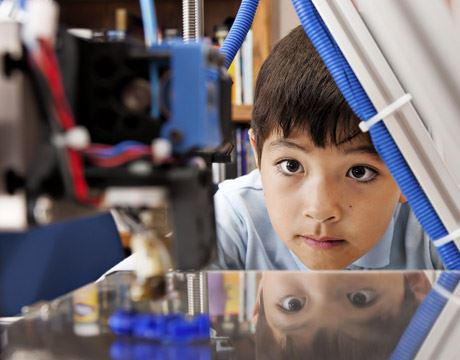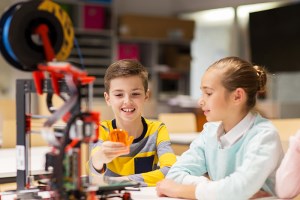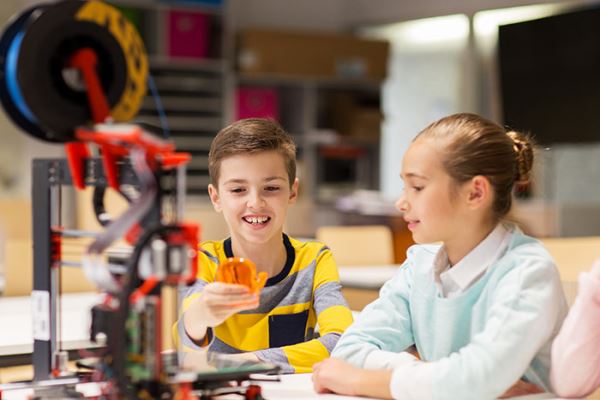The education sector has seen a range of innovations coming from 3D printing, as it brings new experiences and new opportunities for students to exhibit their creative side.
School clubs, such as robotics clubs, have also recognised the benefits from having 3D printers available to them.
Further, lessons in the classroom can be altered to incorporate 3D printing and build-your-own-robot tasks to engage students in learning through new technology.
When designing and building robots, school robotics clubs have seen improvements in part quality and timeliness when using 3D printing. This makes the process much simpler so students can customise designs, watch the production, and then explore and experiment with different ways of improvement through a hands-on manner.
As robotics clubs become more popular in schools, it’s important to have a streamlined production process that lets all students be a part of creating customised robots.
Some of the biggest benefits of using 3D printers when manufacturing robots include:
-
Being able to customise parts. Rather than having to find an alternative part and using it to make-do, or waiting on a specific part to arrive, with a 3D printer students are able to make the exact part needed.
-
Having a faster turnaround time. 3D printers are able to make parts in a matter of hours that can be ready for fitting in a short period of time. This limits the downtime for students while they wait for their robot to be made.
With enhanced safety mechanisms inbuilt within the machines, schools can ensure student safety when in use. 3D printers operate by melting plastic at a high temperature, and have heavy equipment moving rapidly to layer each part, which can be dangerous without the proper protective measures in place.
Because it’s important for students to use the machine without concern of injuries, schools should source machines with the right set of safety features, such as auto-stop when the chamber door is opened.
Through the use of 3D printing in robotic clubs, interest has spiked from students and teachers when it comes to other educational potential.
Students engage more with the subject
More frequently teachers have also begun to incorporate the use of 3D printers into curriculum activities within the classroom. By seeing their efforts turn into a physical form, students are found to want to engage more with the subject.
3D printing also offers an alternative method of learning that a traditional classroom environment can lack. Students have the capability to learn by physically interacting with models and topics to help them problem solve and understand concepts they may not have grasped by simply reading text.
The types of lesson plans that teachers may choose to run in the classroom can include building projects. One example could be a task that involves students designing and creating a robotic rover suitable for Mars.
Inspiring students to study STEM subjects
As students tend to become more motivated and engaged in classroom activities when they can see their own creation come to life, planning alternative lessons can improve students’ quality of learning.
Using 3D printing in education can also inspire students down science, technology, engineering and maths (STEM) pathways. With technology at their fingertips to create and build their own robots, students potentially become motivated to create innovative solutions for the future.
The qualities that come from STEM learning are highly sought after in the workforce of the future. This particularly involves skills in additive manufacturing and automated technology, as well as problem solving and critical analysing.
Using 3D printers and understanding how the technology works can put students a step ahead when planning their future careers.
Adam O’Neill is managing director, Australia and New Zealand, Y Soft.


